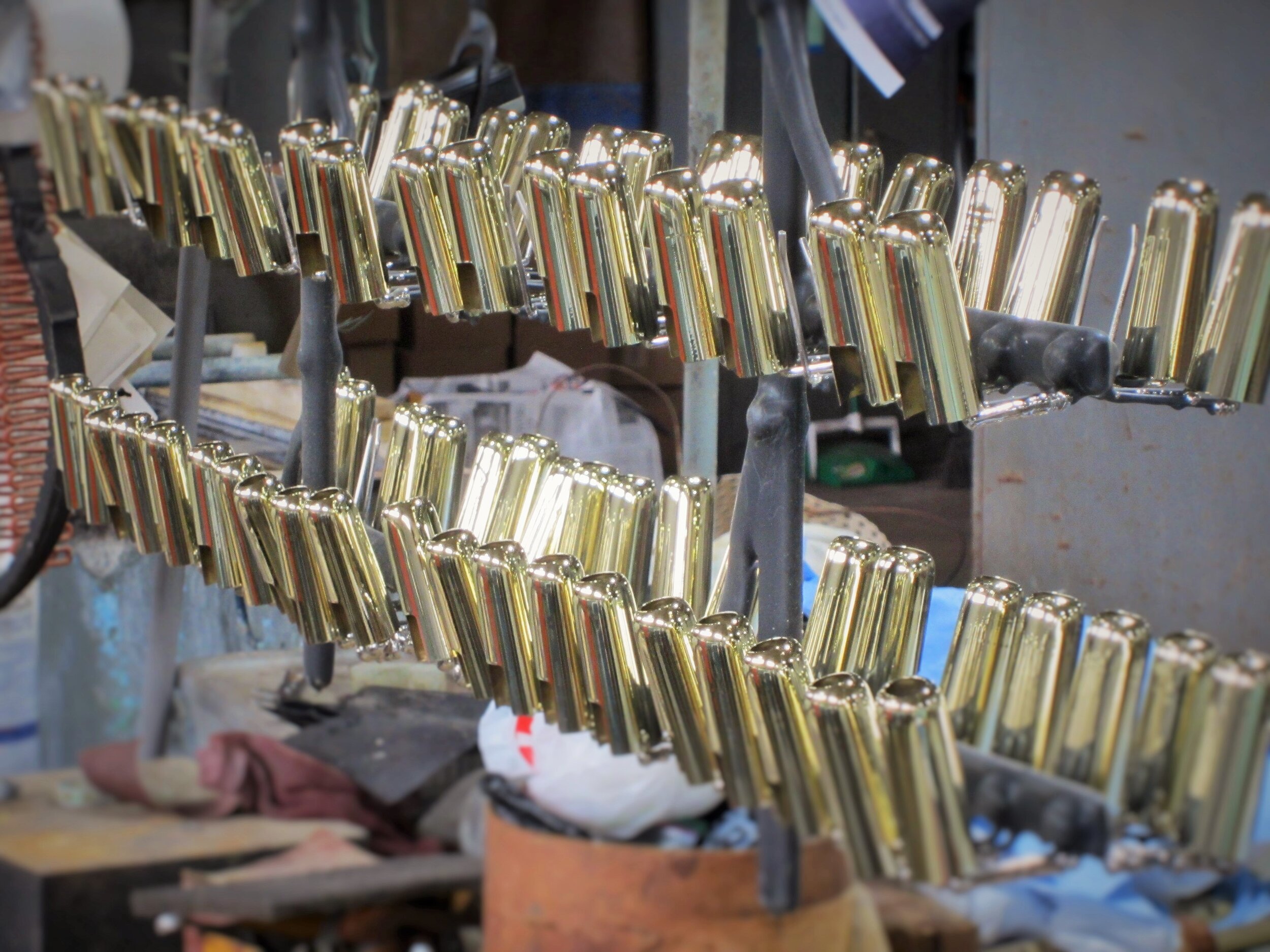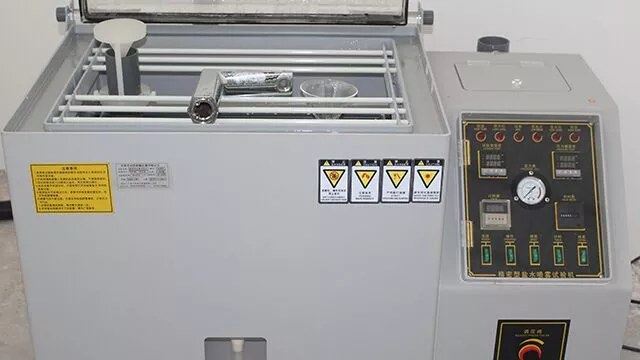Chrome plating is the most common method for faucets. Do you understand the manufacturing process for chrome faucets? Is the chrome surface of the faucet you purchased truly corrosion-resistant? This document will take you through the process of chrome plating, how to test the surface, and how to maintain the chrome faucet.
Chrome Plating Process for Faucets
The chrome plating process for faucets is a meticulous series of steps that involve precision, careful control, and attention to detail. Here is a detailed overview of how the chrome plating is applied:
1. Surface Preparation:
Cleaning: The faucet components undergo a rigorous cleaning process to eliminate any contaminants or residues that may interfere with the plating process.
Polishing: The surfaces are polished to create a smooth and even base for plating, enhancing the adhesion of the chrome layer.
2. Activation of the Surface:
Acid Bath: The components are immersed in an acid bath, activating the surface. This step enhances the adhesion of subsequent layers, ensuring a robust bond.
3. Application of Nickel Layer:
Electroless Nickel Bath: The faucet components are immersed in an electroless nickel bath, where a layer of nickel is deposited on the surface through a chemical reaction. This nickel layer serves as a foundation for the chrome plating.
Uniformity Control: The thickness and uniformity of the nickel layer are carefully controlled to provide a smooth and corrosion-resistant base.
4. Chrome Plating:
Chromium Electroplating Bath: The components move into a chromium electroplating bath, where a thin layer of chromium is deposited onto the nickel layer through an electrochemical process.
Controlled Thickness: The chrome plating thickness is closely monitored to achieve the desired aesthetic and functional properties.
Current Density Control: The current density during electroplating is precisely controlled to ensure uniform coverage and prevent irregularities in the chrome layer.

5. Rinsing and Drying:
Multiple Rinses: After chrome plating, the components go through multiple rinses to remove any residual chemicals.
Drying: The plated components are thoroughly dried to prevent water spots and ensure a pristine finish.
6. Quality Inspection:
Visual Inspection: Each faucet component undergoes a meticulous visual inspection to identify any imperfections, such as pits, cracks, or uneven coating.
Adhesion Test: Adhesion is tested to ensure that the chrome layer firmly adheres to the nickel base.
Corrosion Resistance Testing: Components may undergo corrosion resistance tests to evaluate their durability in various conditions.
Chrome Faucet Durability Tests:
To assess the corrosion resistance of chrome faucets, various tests can be conducted:
1. Salt Spray Test:
Purpose: Evaluate the resistance to corrosion in a saline environment.
Procedure: Faucet surfaces are exposed to a continuous salt spray, simulating harsh conditions. The duration of exposure and subsequent inspection determine corrosion resistance.
2. Acetic Acid Vapor Test:
Purpose: Measures resistance to acid-induced corrosion.
Procedure: Faucet surfaces are subjected to acetic acid vapor, mimicking exposure to acidic substances. The impact on the chrome layer is observed.
3. Abrasion Resistance Test:
Purpose: Assesses resistance to wear and tear.
Procedure: The faucet surface undergoes abrasion testing, simulating long-term use. The extent of wear on the chrome finish is examined.
4. Adhesion Test:
Purpose: Ensures the chrome layer firmly adheres to the base material.
Procedure: Tape or a similar material is applied and removed from the chrome surface. Any peeling or detachment indicates poor adhesion.

Chrome Faucet Maintenance Tips:
1. Regular Cleaning:
Guidance: Clean the faucet regularly with mild soap and water. Avoid abrasive cleaners that may scratch the chrome finish.
2. Soft Cloth Usage:
Guidance: Use a soft cloth or sponge for cleaning to prevent scratches on the chrome surface.
3. Avoid Harsh Chemicals:
Guidance: Refrain from using harsh chemicals or abrasive materials as they can damage the chrome layer. Opt for gentle, non-abrasive cleaning solutions.
4. Dry After Use:
Guidance: Dry the faucet after each use to prevent water spots and mineral deposits that may affect the chrome’s shine.
5. Avoid Impact:
Guidance: Be cautious with hard objects near the faucet to prevent accidental impacts that could damage the chrome finish.
6. Seal Leaks Promptly:
Guidance: Address any leaks promptly to prevent prolonged exposure to water, which may compromise the chrome layer.
7. Professional Inspection:
Guidance: Schedule periodic professional inspections to identify any signs of wear or potential issues with the chrome finish.
By following these maintenance tips and conducting regular cleaning, users can ensure the longevity and aesthetic appeal of their chrome faucets, preserving their resistance to corrosion and overall durability.
 iVIGA Tap Factory Fornitur
iVIGA Tap Factory Fornitur
